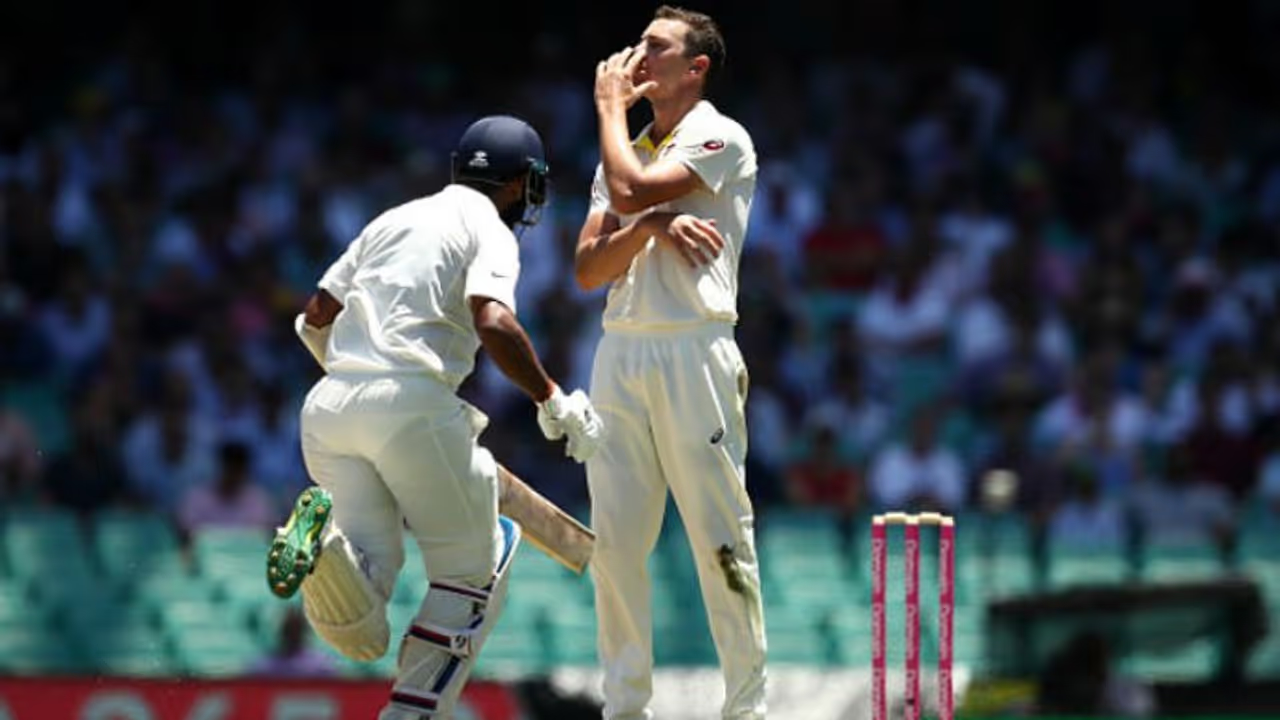India find themselves in driver's seat and looks to have batted Australia out of the Sydney Test already. This all but ensures a Test series victory for India for the first time ever in Australia.
A stupendous batting effort by India at the Sydney Cricket Ground (SCG) saw them post a 600-plus score in the first innings, which pushed Australia in a corner in the fourth Test of the series.
Cheteshwar Pujara fell just seven short of what would have been his fourth Test double ton, but made sure that India were in the driver's seat before he departed. Rishabh Pant played a blinder, becoming the first Indian wicketkeeper to score a Test ton in Australia. Mayank Agarwal and Ravindra Jadeja contributed handy half-centuries.
What could Australia have done to stop this run flow? Where did they go wrong? MyNation brings you 5 points on which the hosts faltered
1. Mitchell Starc not firing
It wouldn't be wrong to say that Australia's bowling revolves around the 1.96-m tall Starc, who on many occasions have helped his team to win matches single-handedly. His tall frame helps him extract bounce even on docile tracks, but unfortunately for Australia, that hasn't been the case in this Test match so far.
The pacer is known to move the ball away from the left-hander, and get the red cherry into the right-hander. However, he wasn't at his best in the first innings in Sydney and will probably not get a chance for redemption as India, sitting atop a pile of runs, may not be required to bat again.
Starc finished with an economy rate of 4.73 — the highest among the three Aussie quicks. He conceded 123 runs and could take only one wicket. Now, if one of your bowling mainstays is off colour, you are bound to struggle, which Australia did.
2. Tim Paine's captaincy errors
After going 0-1 down in the series, Paine did all right in Perth and Australia squared the series there. It meant the series was wide open with two Tests to go. However, Paine went on the defensive in the third Test and has continued with it in the fourth. He has largely looked to save matches rather than pressing for victory.
In Sydney, Paine hasn't been able to rotate his bowlers wisely. On the other hand, if a bowler was going for runs, Paine tried to spread the field and save runs rather continuing with tighter and aggressive fields, trying to lure batsmen into false shots.
It is necessary for Paine to trust his bowlers a little more. Runs can automatically be stopped if wickets are taken.
3. Failure to capitalise on the start
Australia started the match well, sending beleaguered opener KL Rahul back to the pavilion early. However, they were not able to capitalise on the start provided by Josh Hazlewood.
In all the matches of this series played, Pujara has had to come out before he would have liked. But then Pujara dropped anchor and there was no dismissing him. This has almost become a trend in the series.
4. Overdependence on Nathon Lyon
Lyon turned out to be the most successful bowler for Australia again, picking up four crucial wickets. He bowled a little less than 58 overs in India's first innings and finished with the second-best economy rate. His consistency throughout the Test series speaks volumes about his fortitude and discipline.
The problem, though, is about the over-reliance on Lyon. The opposition knows that if Lyon can be negotiated without allowing him to do too much harm, the other Australian bowlers can also be easily handled. Hazlewood kept the tempo up, but lacked support from the other end. Starc, Pat Cummins, Marnus Labuschagne and Travis Head made little or no impact.
If this continues, Australia would be in real trouble if Lyon has an off day. Lyon, with 21 wickets in the series, is far ahead than the rest of the frontline Australian bowlers. Starc and Hazlewood have taken 13 wickets so far, while Cummins has taken 14.
It is high time, therefore, that the other Australian bowlers rise up to the occasion in Lyon's support.
5. The mindset in the Australian dressing room
The Australians have been uncharacteristically timid in Sydney. Once India crossed the 500-run mark, the Australians were almost waiting for Kohli to declare the innings, letting the game drift. Their decisions have been reactive. Earlier Australian teams would have taken the bull by its horns and tried to force an entry into the contest. But the current Australian team is not of the same class.
